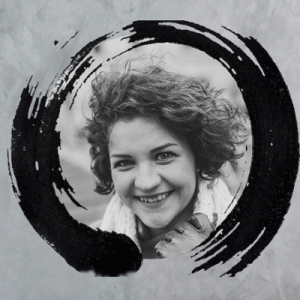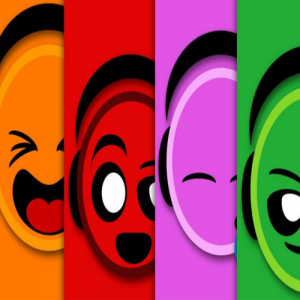The world of Salsa has changed remarkably over the last decade; from the number of people that dance, to the number of teachers and more importantly the awareness of Salsa as a dance activity. Ask your colleagues or family members about Salsa dancing and you will get an opinion. However, as Salsa has grown the teaching methodology has remained stagnant and, in my opinion, ill-preparing students to fully embrace and enjoy the Salsa scene to the fullest.
In this article, I am going to talk about how Salsa classes are taught and their deficiencies. More specifically, I am going to frame this topic in these terms: What, Why and When. The what is dominant in the world of teaching and the why and when are rarely discussed if at all.
What
Most classes I have observed in my 13 years of dancing and teaching Salsa are focused on what you can do, for example, what moves you can lead your partners through, what body movement you can use to express music or what footwork you can do. As more people are becoming teachers in an increasingly monetised and globalised community the focus on teaching people what they can do makes sense.
Teaching people what they can do is extremely profitable as there is an endless amount of material that you can package up for new students; explaining Salsa moves is quite easy for newer Salsa teachers and requires very little preparation for experienced teachers. From a student’s perspective think about the Pokemon Go game; they just have to collect them all.
My observations focused on what causes people to become Salsa athletes as opposed to Salsa Dancers. Salsa athletes are a subject of a future blog but I see them as obsessed with the continued perfection for the sake of it with apparently no goal or end in sight. In contrast, Salsa dancers learn techniques to improve their ability to dance and explore themselves with other people. The intention and learning goals have a massive impact on the growth and development of the dancer but are often not explored by teachers.
I have met and conversed with many Salsa athletes and find that for the most part, they are struggling as the dance floor has evolved. Knowing a lot of content or focusing on what you can do does not have the same premium as it once did. There are far greater dance floor emphases on individuality, musicality and the ability to connect; well, at least among my circle of dancers and peers.
Think about your learning process, have you been focused on the What?
So let us discuss the Why and When and then see why this is rarely taught and the consequences.
Why
Ask yourself a question, has your teacher ever told you why you should lead a crossbody lead? Or why you should lead a right turn? Or why you would do a Suzy Que? I would bet my mortgage that most likely you would have never heard an explanation. Here is something more interesting, ask yourself why you would lead a move? I would guess that this is difficult unless your answer would resemble “just because”, “that is what we do” or “this is a move in the dance”.
The why is not brought up in open classes as it is a hard and subjective topic to discuss and cannot be easily packaged for digestion. There is no right or wrong; this is about self-awareness and discovery. As such, you cannot teach the why but you can take students on a journey to discover and understand for themselves why they will do certain moves.
My personal belief is through understanding why you do certain things is the gateway to becoming an individual and unique dancer in Salsa. With Salsa cloning on a global scale, individuality is becoming a rarer and more precious asset than ever before. I believe that we are entering a new age in Salsa, the age of the individual, where name-dropping and branding fall sideways when up against individuality.
Why not think about why you lead certain moves?
Note: Teaching the Why is extremely challenging to do in larger classes. I regularly bring small groups of students to my home and work on them in an exploratory manner to promote awareness and individuality. While at the start they might look a bit crazy but after a while, they refine and become unique.
When
I am sure that you have all seen dancers on the social dance floor moving amazingly well and leading their partners into fantastic patterns. To new dancers, this seems amazing and inspiring but to experienced dancers, we prefer to watch dancers interpret and play with music, for example how the dancers are influenced by music or how they bring the song to life. Too often dancers are using Salsa music as a metronome which is a symptom of how they are taught.
Very rarely is Salsa music put into the forefront in class and the music policy in clubs is rich or complex. In my mind, the when is far more important than what you lead, but, unfortunately, this sentiment is not shared or emphasised by many Salsa teachers.
This is not a surprise as few Salsa teachers have spent time understanding Salsa music, learning how to teach and, more importantly, how to inspire students. The combination of classes focusing on the what and simple music policies are perfect for the mass selling of Salsa. The downside is that too often I have seen students struggle when they leave their local club and go to any city, national or international events.
Salsa is a polyrhythmic musical form and there is so much that you can express yourself with. The rigid 123 567 is great for teaching but has its limitations and can stop musical growth. The attachment to the 123 567 structure is the reason why so many On1 dancers struggle to adapt to the slightly different and more complex rhythm structure of On2, whereas my On2 only students have little to no trouble adapting to On1.
Why not think about this yourself. When do you lead certain moves? What parts of the music encourage certain moves?
Note: At TNT we teach our basic steps to congas and use this as our gateway to musical interaction. We also have a rich music policy which helps our students engage more.
Summary
I have met many Salsa teachers who do great work on developing well-rounded dancers who understand the What, Why and When of Salsa. Unfortunately, this is not common and you have to search hard, see through the marketing gimmicks and look past the glitz and glamour to find these teachers. With the mass expansion of Salsa worldwide, I believe that we as teachers have failed to keep up with the growth, demands and evolution of the Salsa scene.
If you want to have fun with Salsa and not be concerned with growth then this will not affect you. If you are looking to progress your dancing and be well equipped to experience Salsa at its pinnacle then you need to think more about the Why and When of Salsa and not just focus on the What.
I have wanted to write this blog for a while now and I hope you found this a good read. Please let me know your comments and thoughts on the matter.




